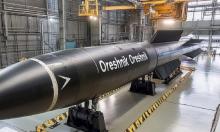Russian kleptocracy is nothing but myth
By Nicholas Vardy

Here are the myths and realities that challenge the current conventional spin on the state of the global economic landscape.
Myth1: The collapse of subprime loans has destroyed more economic wealth more quickly than any other financial event in history. Nothing even comes close.
Reality: An even greater destruction of economic wealth has been occurring right under our noses. The economic value destroyed by the collapse of China's Shanghai Stock Exchange since October is more than 3x that of the write offs from sub prime loans ($1.2 trillion versus $390 billion) and already exceeds the amounts of the most pessimistic of forecasts for the subprime debacle. And this is a lot more money for China than it is for the United States. Consider that more than two-thirds of China's $1.7 trillion reserves, or an amount equivalent to well over 40% of China's GDP, has all been wiped off Chinese corporate and household balance sheets in a little more than six months. That's the equivalent of $5.6 trillion (!) in the United States.
Myth 2: The BRIC (Brazil, Russia, India, and China) countries stand on the verge of overtaking the old global powers of the United States, Japan and Europe in terms of global economic influence.
Reality: Although they boast impressive rates of growth, and have been a much better place to make money than the U.S. stock market, the BRIC countries are still economic minnows. If you look at them in real terms, the BRIC countries are best compared with large U.S. states in terms of economic heft. China and its population of 1.3 billion generate as much economic wealth as do the 60 million inhabitants of California and Texas. India's economy is the size of Florida. Brazil's is the size of New York. And Russia is smaller than Ohio and Illinois combined.
Myth 3: Russia's kleptocracy and gangster politics have crippled Russia's economy, leaving it in tatters. Investors in Russia have suffered from the government's willy-nilly investment and expropriation policies. That's why Warren Buffett, Jim Rogers, and George Soros refuse to touch the place
Reality: Russia presents a conundrum for the Western good guys. Yes, it is a kleptocracy and a handful of Western investors and Russian companies have been shafted in a high profile way. But thanks largely to the soaring price of oil, the Russian economy has exploded, growing at 9.5% in Q4 of last year and 8.5% in Q1 of 2008. That means that it is nipping at the heels of India, and is hot on the trails of China in the economic growth sweepstakes. Among the BRICs, Russia has been by far the best investment during the past decade or so, with investors clocking 60x returns since the Russian market bottomed in October 1998. Russia is also one of the top markets in the world this year. And here's a factoid that warms the Russian heart: Moscow now boasts a larger number of billionaires than New York or London.
Myth 4: China and India dominate the foreign investment landscape of the United States. After all, everything from Starbucks to Apple is really a "China play."
Reality: Again, don't believe your magazine covers. U.S. investment in tiny Ireland, a single European country of 4.1 million people, dominates American investment in China. While U.S. foreign investment to China hit a record $6.3 billion in 2007, U.S. investment in Ireland, a gateway to Europe, was more than double that figure. Why? That's where the money is. American companies make three times as much profit from their investments in Ireland, than they do from all of their investments in China. What about India? For all the stories of Silicon Valley moving to Bangalore, U.S. corporations invested more last year in Austria (pop. 8.2 million) and Sweden (pop. 9 million).
Myth : Oil companies are unfairly exploiting U.S. consumers and deserve to be taxed for excessive "windfall profits."
Reality: With gas priced at more than $4 a gallon (and more than $12 in Europe), it's no wonder oil companies have become the political whipping boy of U.S. presidential politics. But looked at through the green-eyed shades of a financial analyst, oil companies aren't extraordinarily profitable, either in relative or in absolute terms. Oil and gas companies made $86.5 billion in profits last year. It is a lot of money, yes. But high-tech companies made $103.4 billion, the retail sector $137.5 billion, and the financial services industry took in $498.5 billion. Nor are oil companies unusually profitable, making about 8.3 cents in gross profit per dollar of sales. Electronics companies make 14.5 cents per dollar and computer equipment makers take in 13.7 cents per dollar. Bill Gates' Microsoft makes 27.5 cents per dollar of sales. And with 60% of U.S. oil imported, a good chunk of those profits from high oil and gas prices are going into the pockets of governments in the Middle East, Venezuela, and Russia and not back to Texas or Exxon shareholders
Click here to read the full text of the article
Source: Seeking Alpha
Subscribe to Pravda.Ru Telegram channel, Facebook, RSS!





